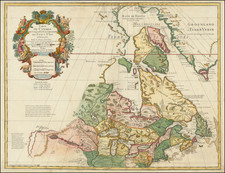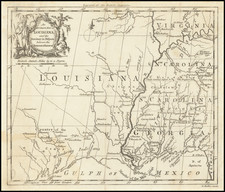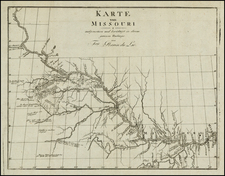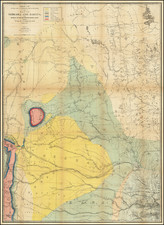Rare early birdseye view of Nebraska City, Nebraska, by Albert Ruger, the first American Bird's Eye View artist, published in Chicago by the Merchant's Lithogr. Co.
Ruger's view of Nebraska City is one of the two earliest printed views we were able to locate, along with Ruger's view of Omaha, also issued in 1868. The view is very rare. OCLC locates only the Library of Congress and Penn State copies.
Albert Ruger was the first of the bird's eye artists active in America. As noted by the Library of Congress:
Albert Ruger was the first to achieve success as a panoramic artist. The collections of the Library's Geography and Map Division contain 213 city maps drawn or published by Ruger or by Ruger & Stoner. The majority came from Ruger's personal collection, which the Library purchased in 1941 from John Ramsey of Canton, Ohio. Before this accession, there were only four Ruger city plans in the Geography and Map Division. Born in Prussia in 1829, Ruger emigrated to the United States and worked initially as a mason. While serving with the Ohio Volunteers during the Civil War, he drew views of Union campsites, among them Camp Chase in Ohio and Stephenson's Depot in Virginia. He continued to draw after the war, and his prints include a famous lithograph of Lincoln's funeral car passing the statehouse in Columbus, Ohio.
By 1866, Ruger had settled in Battle Creek, Michigan, where he began his prolific panoramic mapping career by sketching Michigan cities. Full descriptions of many Ruger views of Michigan cities are contained in John Cumming's A Preliminary Checklist of 19th Century Lithographs of Michigan Cities and Towns. Urban communities in some twenty-two states and Canada, ranging from New Hampshire to Minnesota and south to Georgia and Alabama, were sketched by Ruger. He continued his activity into the 1890s, moving his business to Chicago, Madison, and St. Louis as he sought new markets. In the late 1860s, Ruger formed a partnership with J. J. Stoner of Madison, Wisconsin, and together they published numerous city panoramas. Ruger was particularly productive during the 1860s; in 1869 alone, he produced more than sixty panoramic maps. In addition to city plans, he drew views of university campuses, among them Notre Dame, Shurtleff College, and the University of Michigan. Albert Ruger died in Akron, Ohio, on November 12, 1899.
Nebraska City was the site of Old Fort Kearny, a military post used by the government in 1846 and abandoned several years later. Shortly after the post was vacated, John Boulware developed a ferry service from Iowa across to present day Nebraska City. He and his father grew their business and built a ferry house, the first residence in Nebraska City in 1852 or 1853. Slaves were first bought and sold in the 1850s in Nebraska City.
In 1854, the Kansas-Nebraska Act allowed legal settlement in the area. Three early townships were incorporated, Nebraska City and Kearney City in 1855, and South Nebraska City in 1856. Nebraska City was among the cities considered for the Nebraska Territory capital. On December 31, 1857, these three town sites along with Prairie City merged to form the present day Nebraska City.
In the mid 1800s, steamboats were the primary force behind Nebraska City's growth. In the spring of 1858 Russell, Majors and Waddell started freighting from Nebraska City on a government contract to transport all provisions for all western forts. The supplies were brought up the Missouri River by steamboat and then taken out by wagon train. Nebraska City's favorable position and good trail made it an important link to the west.
Since that beginning, the city was established as a regional transportation, economic, and agriculture hub for the three state area. Additional forms of transportation were important including the steam wagon and the first locomotive engine of the Midland Pacific.
Rare early birdseye view of Nebraska City, Nebraska, by Albert Ruger, the first American Bird's Eye View artist, published in Chicago by the Merchant's Lithogr. Co.
Ruger's view of Nebraska City is one of the two earliest printed views we were able to locate, along with Ruger's view of Omaha, also issued in 1868. The view is very rare. OCLC locates only the Library of Congress and Penn State copies.
Albert Ruger was the first of the bird's eye artists active in America. As noted by the Library of Congress:
Albert Ruger was the first to achieve success as a panoramic artist. The collections of the Library's Geography and Map Division contain 213 city maps drawn or published by Ruger or by Ruger & Stoner. The majority came from Ruger's personal collection, which the Library purchased in 1941 from John Ramsey of Canton, Ohio. Before this accession, there were only four Ruger city plans in the Geography and Map Division. Born in Prussia in 1829, Ruger emigrated to the United States and worked initially as a mason. While serving with the Ohio Volunteers during the Civil War, he drew views of Union campsites, among them Camp Chase in Ohio and Stephenson's Depot in Virginia. He continued to draw after the war, and his prints include a famous lithograph of Lincoln's funeral car passing the statehouse in Columbus, Ohio.
By 1866, Ruger had settled in Battle Creek, Michigan, where he began his prolific panoramic mapping career by sketching Michigan cities. Full descriptions of many Ruger views of Michigan cities are contained in John Cumming's A Preliminary Checklist of 19th Century Lithographs of Michigan Cities and Towns. Urban communities in some twenty-two states and Canada, ranging from New Hampshire to Minnesota and south to Georgia and Alabama, were sketched by Ruger. He continued his activity into the 1890s, moving his business to Chicago, Madison, and St. Louis as he sought new markets. In the late 1860s, Ruger formed a partnership with J. J. Stoner of Madison, Wisconsin, and together they published numerous city panoramas. Ruger was particularly productive during the 1860s; in 1869 alone, he produced more than sixty panoramic maps. In addition to city plans, he drew views of university campuses, among them Notre Dame, Shurtleff College, and the University of Michigan. Albert Ruger died in Akron, Ohio, on November 12, 1899.
Nebraska City was the site of Old Fort Kearny, a military post used by the government in 1846 and abandoned several years later. Shortly after the post was vacated, John Boulware developed a ferry service from Iowa across to present day Nebraska City. He and his father grew their business and built a ferry house, the first residence in Nebraska City in 1852 or 1853. Slaves were first bought and sold in the 1850s in Nebraska City.
In 1854, the Kansas-Nebraska Act allowed legal settlement in the area. Three early townships were incorporated, Nebraska City and Kearney City in 1855, and South Nebraska City in 1856. Nebraska City was among the cities considered for the Nebraska Territory capital. On December 31, 1857, these three town sites along with Prairie City merged to form the present day Nebraska City.
In the mid 1800s, steamboats were the primary force behind Nebraska City's growth. In the spring of 1858 Russell, Majors and Waddell started freighting from Nebraska City on a government contract to transport all provisions for all western forts. The supplies were brought up the Missouri River by steamboat and then taken out by wagon train. Nebraska City's favorable position and good trail made it an important link to the west.
Since that beginning, the city was established as a regional transportation, economic, and agriculture hub for the three state area. Additional forms of transportation were important including the steam wagon and the first locomotive engine of the Midland Pacific.
The following is excerpted from the Library of Congrss Website:
Albert Ruger was the first to achieve success as a panoramic artist. The collections of the Library's Geography and Map Division contain 213 city maps drawn or published by Ruger or by Ruger & Stoner. The majority came from Ruger's personal collection, which the Library purchased in 1941 from John Ramsey of Canton, Ohio. Before this accession, there were only four Ruger city plans in the Geography and Map Division. Born in Prussia in 1829, Ruger emigrated to the United States and worked initially as a mason. While serving with the Ohio Volunteers during the Civil War, he drew views of Union campsites, among them Camp Chase in Ohio and Stephenson's Depot in Virginia. He continued to draw after the war, and his prints include a famous lithograph of Lincoln's funeral car passing the statehouse in Columbus, Ohio.
By 1866, Ruger had settled in Battle Creek, Michigan, where he began his prolific panoramic mapping career by sketching Michigan cities. Full descriptions of many Ruger views of Michigan cities are contained in John Cumming's A Preliminary Checklist of 19th Century Lithographs of Michigan Cities and Towns. Urban communities in some twenty-two states and Canada, ranging from New Hampshire to Minnesota and south to Georgia and Alabama, were sketched by Ruger. He continued his activity into the 1890s, moving his business to Chicago, Madison, and St. Louis as he sought new markets. In the late 1860s, Ruger formed a partnership with J. J. Stoner of Madison, Wisconsin, and together they published numerous city panoramas. Ruger was particularly productive during the 1860s; in 1869 alone, he produced more than sixty panoramic maps. In addition to city plans, he drew views of university campuses, among them Notre Dame, Shurtleff College, and the University of Michigan. Albert Ruger died in Akron, Ohio, on November 12, 1899.









![[Uncaptioned image of two figures seated in front of a tipi, mounted albumen print]](https://storage.googleapis.com/raremaps/img/small/78744.jpg)




